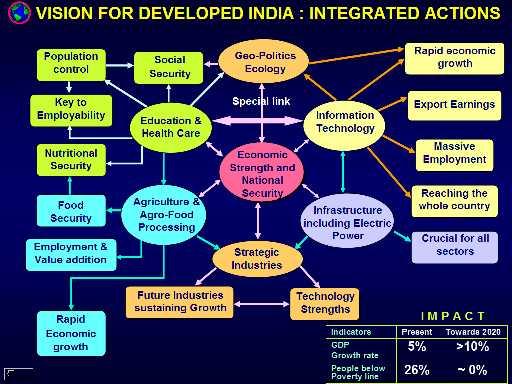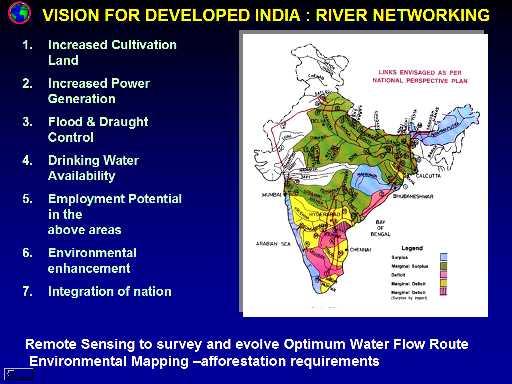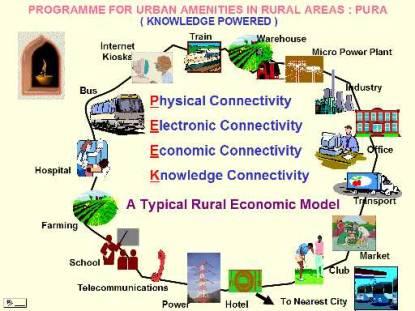Address of the President of India to the National Assembly of the Republic of Sudan
Sudan : 21-10-2003
THE VISION FOR DEVELOPMENT
It is a great honour that you have bestowed on the Government and people of India, and indeed a delight for me, to address this highest Assembly of your ancient and great nation. I am deeply conscious that your country is at a crucial turning point in its history. Sudan, land of the two Niles, is the largest country in Africa. Both our countries share a rich heritage. This and our value system would be with us when we - India and Sudan move forward to the future.
Working Together
I am thankful for the privilege of sharing with you and the people of Sudan whom you represent, our experience in our efforts to develop the nation socially and economically over the last fifty years. I do so in a spirit of understanding that we may learn from each other and strengthen our resolve to move our nations ahead to greater prosperity, happiness, and freedom from insecurity in the years ahead. Perhaps as we do so, we shall realize that we have so much in common that we shall wonder why we have not got closer together much earlier. Both our nations are free, independent states in an increasingly complex and interdependent world where the values of friendship and mutual assistance are of paramount importance. Now that our banners of freedom are unfurled, by fighting for our people we are fighting for the world.
Indo-Sudan Friendship
Throughout recorded history, India has always been a friend of all nations and we are happy to be counted among the friends of Sudan. We have never at any time in our past invaded other countries or used destructive force to achieve any end. The hallmark of India throughout the ages has been described as:
meaning, "All are our native places and all our relatives". This is deeply ingrained in the social and political life of India for thousands of years.
India's Vision
Now I would like to share our experiences with you. India strives to be a developed nation by 2020. The first vision for the nation was achieving independence, which we got in 1947. The independence movement threw up various leaders in diverse fields like politics, philosophy, judiciary, science & technology and industry. In many areas, improvements also took place like literacy, agriculture, strategic areas, certain small and large scale industries. However, in spite of this even after 50 years we are counted among one of the developing countries, in a distinct way a separation from G8 countries. We have many challenges. Nearly 260 million people are still below poverty line and have to join mainstream of good life. 100% literacy, wealth for all, multiple industrial and agricultural productivity and 10% GDP growth rate has to emerge. Hence, we have the second vision for the nation to become a developed country.
Integrated action for developed India
In order to realize developed India by 2020, five key areas have been identified for an integrated action: (1) Agriculture and food processing - with a target of 360 million tons per annum of food and agricultural products. Other areas of agriculture and agro food processing would bring food security and prosperity to rural people and speed up the economic growth; (2) Education and Healthcare - aiming to increase the employment potential leading to social security and population control; (3) Infrastructure development including reliable and quality electric power for all parts of the country, which is vital for all the core sectors; (4) Information and Communication Technology - This is one of our core competencies, promoting education in remote areas and creating massive employment and national wealth through export earning; (5) Critical technologies and strategic industries - the progress in nuclear, space and defence technologies will provide sustained growth and self-reliance for the nation. These five areas are closely inter-related and lead to national, food and economic security. A strong partnership among the R&D, academy, industry, business and the community as a whole with the Government departments and agencies will be essential to accomplish the vision.
Networking of rivers
Networking of rivers is essential for flood and drought control, for availability of drinking water to all regions, for goods navigation and transportation and for increased power generation and cultivation land. This mission will also provide employment opportunities to the rural population. Science and technology can surely help in executing such mission. Remote sensing to survey and evolve optimum water routes, environmental mapping and afforestation requirements, and continuous monitoring of the networked water flow through all seasons and at all times may require a dedicated satellite constellation for our networked river systems. Above all, the networking will lead to enhancement of environment and national connectivity.
Knowledge powered PURA (Providing Urban amenities in Rural Areas)
Providing Urban amenities in Rural Areas (PURA) is another example for creating rural wealth and prosperity. The model envisages a habitat designed to improve the quality of life in rural places and makes special suggestions to remove urban congestion also. Naturally our most demanding urban problem is that of congestion removal and efficient supply of water and effective waste disposal in every locality are the paramount civic needs. There is a minimum size below which a habitat is not viable and not competitive with the existing congested city. At the same time, the existing congested city is not economical compared to a new town once a minimum size of expansion is crossed. As against a conventional city say, rectangular in shape and measuring approximately 10 km by 6 km, the model considers an annular ring-shaped town integrating minimum 8 to 10 villages of the same 60 km2 area. This model provides easy access to villages, saves transportation time and cuts costs substantially and is more convenient for general public. Knowledge powered rural development is an essential need for transforming India into a knowledge power and high bandwidth rural connectivity is the minimum requirement to take education, health care and economic activities to the rural areas. Knowledge society leading to knowledge super power can prosper and survive only in the environment of economic security and internal security. Physical connectivity by providing roads, electronic connectivity by providing reliable communication network and knowledge connectivity by establishing professional institutions and vocational training centers will have to be done in an integrated way so that economic connectivity will emanate. Such Model of establishing a circular connectivity among the rural village complexes will accelerate rural development process by empowerment.
Indo-Sudan Partnership
Though I have shared with you the India's vision for the developed nation by 2020 and its development plan, I am very sure, India's vision and her experiences can be useful in evolving a mission for the development of Sudan. It is only natural that the two countries should strive to synergize their development goals and policies. This creates the strong possibility that both nations by 2020 could acquire enviable capabilities. This partnership in the development of our nations would be a model for other developing and developed nations.
One among the key resources of Sudan is the hydrocarbon. With a large part of the country still unexplored, hydrocarbon contribution to the national economy is likely to increase significantly in future. The national oil companies of India and other countries are participating in the discoveries of oil and gas in Sudan. India and Sudan can work together in building capability for oil exploration, refining, marketing and value added oil based products. Exploitation of natural hydro carbon and other natural resources by Sudan with the assistance of India could fuel economic growth of Sudan through many mission mode project like the Vision 2020 of India.
Sudan has already realized the value of cooperation and collaboration with neighboring nations, like the Inter-governmental Authority for Development (IGAD). Over the years, our nations have maintained cordial and friendly relations and have formed many institutional arrangements for widening the scope of our cooperation and collaboration.
Conclusion
The time has thus arrived for our two nations to consolidate these developments since Independence, and forge stronger bonds between the planning and implementation institutions, public and private, of both nations for prosperity, happiness and freedom from insecurity. Using existing mechanisms, or creating new ones if necessary, the two nations must emerge with well-defined joint missions, programmes and projects between which could have the following broad objectives:
1. To work together for creative, balanced and sustainable democratic socio-economic growth in both nations.
2. To create new programme management organizations and joint-venture institutions and forge strong linkages between existing institutions for specific developmental missions.
3. To enable each other to attain and sustain self-sufficiency in energy, food, water, health care and critical new technologies (especially analysis and use remote sensing data) and to develop surplus capacities to assist other nations.
Thank you once again for this creative and historical opportunity to extend India's hand in friendship and goodwill as well as to share a common vision for the future.



